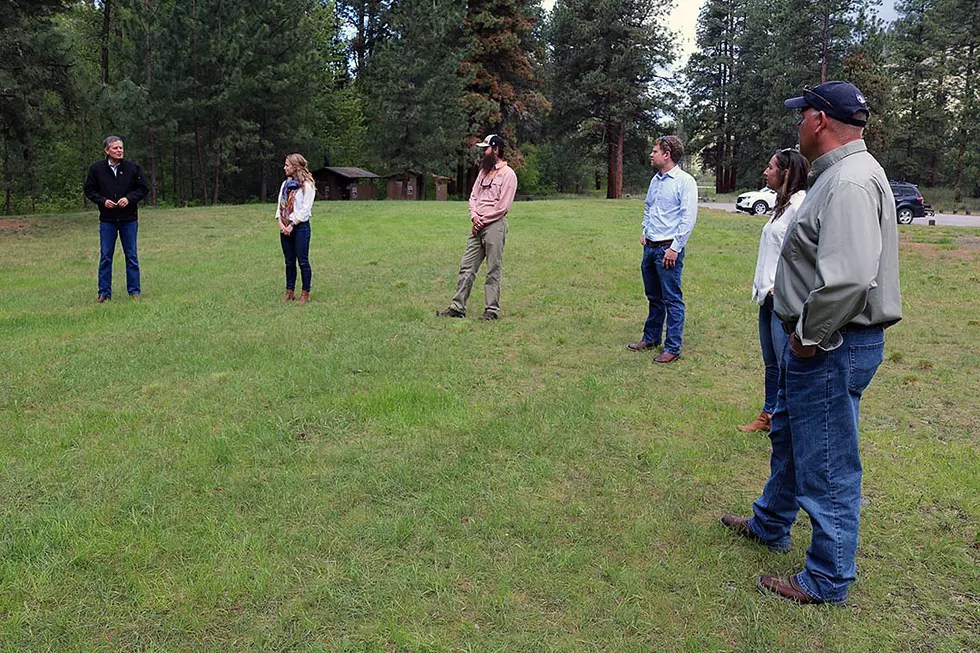
Lolo Trails Landmark Project finally added to public lands
With a final infusion of money from the federal Land and Water Conservation Fund, the Lolo Trails Landmark Project is finally in public hands.
The Trust for Public Land, Southern Pine Plantation Montana and the U.S. Forest Service announced the entire 14,800 acres of the Lolo Trails Landmark Project is no longer just a project – it’s now permanently part of the Lolo National Forest.
"This land acquisition is rich with important natural resources, which provide for a healthy watershed and public recreational opportunities," said Missoula County Commissioner Dave Strohmaier in a release. "We're grateful to see the work of this collaboration come to fruition so Missoula County residents and visitors alike can enjoy its recreational and historical value for generations to come."
The project has been years in the making and was broken into two phases to make it easier to raise money. It might not have happened or at least not happened this quickly without Congress passing permanent full funding of the Land and Water Conservation Fund a year ago as part of the Great American Outdoors Act.
Phase 1 included the 6,000 acres farthest up the valley. The Trust for Public Land submitted a request for $4.4 million in LWCF money for that in 2018. But at the time, there was a lot of competition nationwide for a lot less money, since Congress rarely allocated the full $900 million promised to the LWCF. All projects are ranked for priority to receive the money, and although Lolo Trails ranked high, it wasn’t high enough until last year.
That hurdle cleared, it was a matter of getting another $6 million to pay for the almost 8,600 acres of Phase 2 farther down the valley. On March 18, the U.S. Forest Service announced the Phase 2 had received $6.4 million to “mitigate the effects of climate change by providing the cold water that federally-listed bull trout and other species need to sustain healthy populations in a warming climate.”
The funding secured, it was then just a matter of wrapping up the details of the land purchase. As of July 1, all the “I’s” were dotted and “T’s” were crossed, said Trust for Public Land spokeswoman Rebecca Bullis.
The property is a jumble of sections adjacent to forest land that meander up Lolo Canyon from just west of Lolo to past Bear Creek. It used to belong to Weyerhaeuser, until Southern Pine Plantation bought most of the Weyerhaeuser holdings in western Montana in late 2019.
“When we acquired these lands from Weyerhaeuser, we agreed to see this project to completion. We’re proud to work with The Trust for Public Land and the U.S. Forest Service to protect this incredible property and provide recreational access to so many Montanans,” said SPP Montana Pat Patton in a release.
With people flooding into Montana spurred by the pandemic and more opportunities to work remotely, the sale couldn’t have occurred at a better time to conserve open land. Otherwise, subdivisions might have sprawled up the canyon, creating more barriers to wildlife migration and reducing public land access.
“It prevents fragmentation and redirects development away from the wildland-urban interface, making it a vital investment in healthy wildlife and fish, world-class public recreation, and the Montana way of life,” said Catherine Schmidt, Field Representative with The Trust for Public Land.
Bordering Lolo Creek, the project also provides access that might have otherwise been lost to the Lewis & Clark and Nez Perce national historic trails on land owned by SPP Montana.
“The closing of this acquisition represents several years of dedicated work by partners to ensure a seamless transfer into public ownership. While these lands provide important recreation access and habitat connectivity, they are also historically and culturally significant areas to both the Nez Perce Tribe and the Confederated Salish and Kootenai Tribes of the Flathead Nation,” said Lolo National Forest Supervisor Carolyn Upton.
“This acquisition brings us closer to eliminating the previous checker board ownership to ensure a greater continuity of management and ultimately, the conservation of the area’s history and access for the benefit of generations to come.”
Contact reporter Laura Lundquist at lundquist@missoulacurrent.com.
